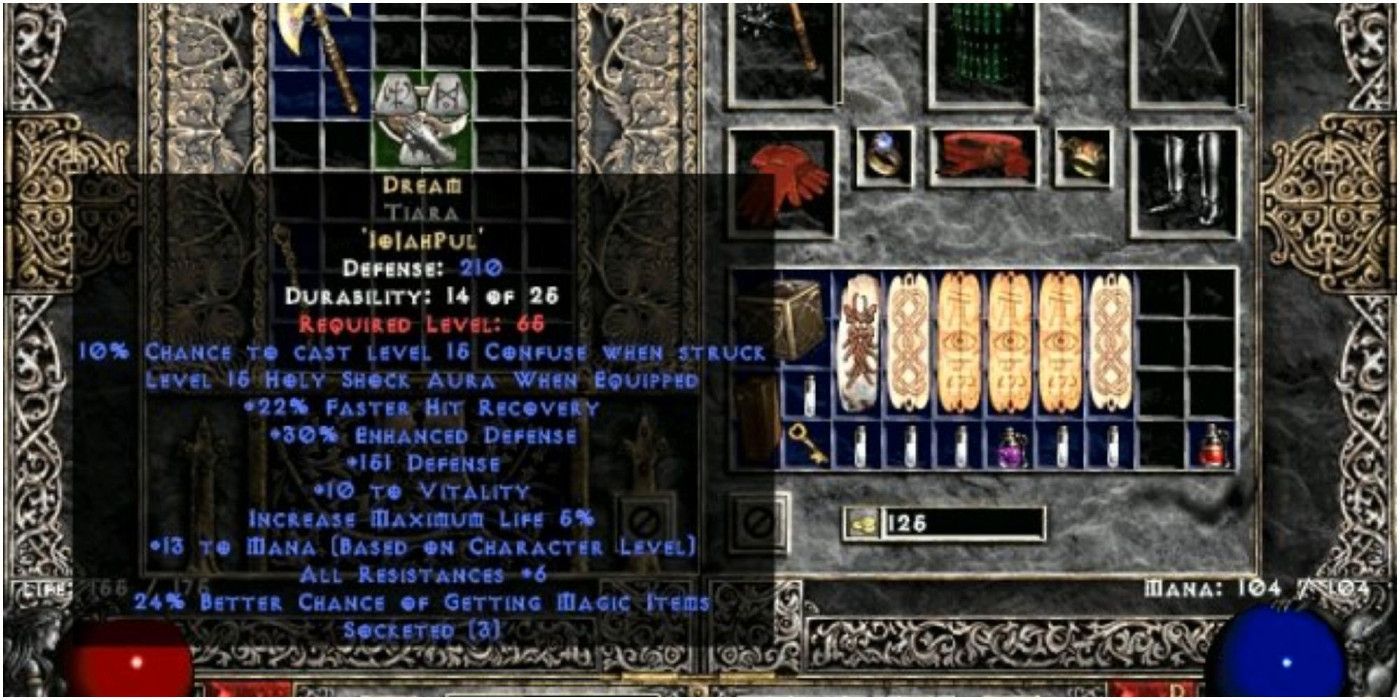Editor’s Note: A lawsuit has been filed against Activision Blizzard by the California Department of Fair Employment and Housing, which alleges the company has engaged in abuse, discrimination, and retaliation against its female employees. Activision Blizzard has denied the allegations. The full details of the Activision Blizzard lawsuit (content warning: rape, suicide, abuse, harassment) are being updated as new information becomes available.
There comes a point in Diablo 2: Resurrected where gold no longer matters and players will grind after the best gear, but runes and their runewords can break up that grind, leading to a better player economy than Diablo 3. Originally, runes were added with the expansion to the original Diablo 2 game, titled Lord of Destruction. These runes appear in every act and on every difficulty, though the runes do have different levels, so some won’t appear until much later in the game.
Runes function similarly to gems, in that they are collectible items that can be socketed into armor and weapons to give them better stats. Runes, however, also have hidden properties. If players combine them in a certain order with the proper items, they gain additional effects. This system of combining is known as the runeword system.
For example, one of Diablo 2: Resurrected’s best early runewords is “Stealth,” which combines the Tal and Eth runes into a piece of chest armor. Normally if players were to socket those runes, they would get +30% Poison Resistance from the Tal rune, and Regenerate Mana 15% from the Eth rune. With the runeword, they gain several other effects, including faster run/walk speed, faster cast rate, faster hit recovery, and a bonus to dexterity.
How Runewords Work in Diablo 2: Resurrected

There is a caveat to making runewords. Players can’t just socket them into anything they find lying around. To make a specific runeword, players need to find a weapon or piece of armor with exactly the correct number of sockets. Furthermore, the items must be of normal quality, meaning if it is a magic, rare, or higher item, the runeword won’t work. This is what makes runewords so special. Suddenly, normal items are important again, whereas before players would only use normal items until they could find something better, or imbue them for rare Diablo 2: Resurrected items. With runewords, players are encouraged to actually hunt for normal gear, which means that having gear with a lot of magic find may actively be a hinderance.
Sometimes finding the proper runes can be tough. Due to the random nature of loot in Diablo 2: Resurrected, players might have trouble getting a specific rune to drop. Using recipes for the Horadric Cube is great for this. Players can combine three runes of the same type to get one rune of the next tier. In original Diablo 2, some runes could only be crafted for characters that were part of the game’s ladder system, but now Diablo 2: Resurrected has changed that to remove the restriction, meaning single-player and non-ladder characters can take advantage of all the Horadric Cube recipes.
One of the things that Diablo 2: Resurrected changed from the original game was to make stash sizes larger, making runewords is even easier, as players will have more room to store runes and their corresponding armor and weapons. Players will get a lot more use out of items than ever before, and being able to store more items means having more stock to trade between players, leading to a better player economy with more room for players to max out the gear of multiple characters.




